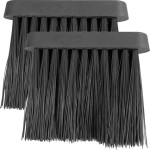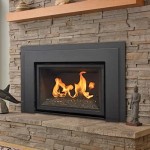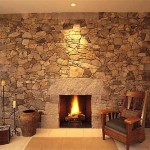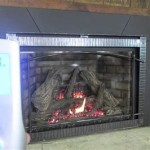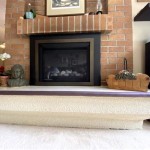Installing a Wood Burning Stove in an Existing Fireplace: A Comprehensive Guide
The incorporation of a wood burning stove into an existing fireplace is a popular home improvement project that offers both aesthetic appeal and functional heating capabilities. This process, while seemingly straightforward, requires careful planning, adherence to safety regulations, and a thorough understanding of the necessary steps involved. This article provides a comprehensive overview of installing a wood burning stove within an existing fireplace, focusing on key considerations and the practical aspects of the installation process.
Before embarking on this project, it is crucial to understand the potential benefits and challenges. A wood burning stove can provide a significant source of supplemental heat, potentially reducing reliance on central heating systems and lowering energy bills. Furthermore, the ambiance created by a wood burning stove adds a cozy and visually appealing element to any living space. However, it is also important to recognize the responsibilities associated with wood burning stoves, including the need for regular maintenance, proper wood storage, and adherence to local air quality regulations.
Preliminary Assessment and Planning
The initial phase of installing a wood burning stove involves a comprehensive assessment of the existing fireplace and meticulous planning. This stage is critical for ensuring a safe and efficient installation that complies with all applicable codes and regulations. Failure to properly assess the fireplace and plan the installation can lead to safety hazards, inefficient heating, and potential property damage.
First, the existing fireplace must be thoroughly inspected for structural integrity. This includes examining the firebox for cracks, crumbling mortar, and other signs of damage. The chimney should also be inspected for blockages, deterioration, and proper draft. A professional chimney sweep is highly recommended to clean and inspect the chimney, ensuring it is free of creosote buildup and other obstructions. Creosote is a highly flammable byproduct of wood burning, and its accumulation in the chimney poses a significant fire risk. A chimney sweep can also assess the chimney's condition and recommend any necessary repairs or maintenance.
Next, the dimensions of the fireplace opening need to be accurately measured to determine the appropriate size of the wood burning stove. The stove should fit comfortably within the fireplace opening, allowing for adequate clearance between the stove and the surrounding walls, mantel, and hearth. The manufacturer's specifications for the stove will dictate the required clearances, and these must be strictly adhered to. Failing to maintain proper clearances can result in overheating and potentially ignite nearby combustible materials.
Choosing the right wood burning stove is another crucial aspect of the planning phase. Stoves are available in various sizes, designs, and heating capacities. The size of the area to be heated, the insulation of the home, and personal preferences should all be considered when selecting a stove. It is advisable to consult with a qualified stove retailer or installer to determine the most appropriate stove for the specific needs of the household.
Finally, it is essential to obtain all necessary permits and approvals before commencing the installation. Local building codes and regulations often govern the installation of wood burning stoves, and failure to comply with these regulations can result in fines and delays. Contacting the local building department is the best way to determine the permit requirements in a specific area.
Preparing the Fireplace and Chimney
Once the preliminary assessment and planning are complete, the next step is to prepare the fireplace and chimney for the installation of the wood burning stove. This involves cleaning, repairing, and potentially modifying the existing structure to ensure it is suitable for the new stove. Proper preparation is crucial for ensuring the safe and efficient operation of the wood burning stove.
The fireplace opening may need to be modified to accommodate the stove and its venting system. This could involve removing bricks or masonry to enlarge the opening or installing a steel liner to protect the existing chimney. A steel liner is highly recommended, especially in older chimneys, as it provides a smooth, airtight flue that improves draft and reduces the risk of chimney fires. The liner should be the correct diameter for the stove being installed. A properly sized liner ensures efficient combustion and minimizes creosote buildup.
The hearth, which is the non-combustible area in front of the fireplace opening, may also need to be extended or reinforced to meet the stove manufacturer's specifications. The hearth protects the floor from sparks and embers that may escape from the stove. The size and thickness of the hearth are typically specified by the stove manufacturer and local building codes. Common hearth materials include brick, stone, and tile.
If the existing chimney is not in good condition, it may need to be repaired or rebuilt. Cracks, crumbling mortar, and other signs of deterioration can compromise the integrity of the chimney and pose a safety hazard. Repairing the chimney may involve repointing the mortar joints, replacing damaged bricks, or installing a new chimney cap. In severe cases, it may be necessary to rebuild the entire chimney.
Cleaning the chimney is a crucial step in preparing it for the wood burning stove. As mentioned earlier, creosote buildup can pose a significant fire risk. A professional chimney sweep should be hired to clean the chimney and remove any accumulated creosote. The chimney should also be inspected for obstructions, such as bird nests or debris, which can impede draft and increase the risk of carbon monoxide poisoning.
Installing the Wood Burning Stove and Venting System
The final phase of the installation process involves physically placing the wood burning stove into the fireplace opening and connecting it to the venting system. This stage requires careful attention to detail and adherence to the stove manufacturer's instructions. A proper installation ensures the stove operates safely and efficiently.
The wood burning stove should be carefully positioned within the fireplace opening, ensuring it is level and stable. Shims can be used to adjust the height of the stove and ensure it is properly aligned. The stove should be positioned so that it is easily accessible for loading wood and cleaning. Adequate clearance should be maintained between the stove and the surrounding walls, mantel, and hearth.
Connecting the stove to the venting system is a critical step. The stove should be connected to the steel liner using a stovepipe that is the correct diameter for the stove. The stovepipe should be securely connected to both the stove and the liner, using stovepipe cement to create an airtight seal. The stovepipe should be as short and straight as possible to minimize resistance to draft. Sharp bends and long horizontal runs should be avoided.
A chimney cap should be installed at the top of the chimney to prevent rain, snow, and debris from entering the flue. The chimney cap also helps to improve draft by protecting the chimney from wind. The chimney cap should be made of durable, weather-resistant material, such as stainless steel.
Once the stove is installed and connected to the venting system, it is essential to perform a test burn to ensure it is operating correctly. Start with a small fire and gradually increase the size of the fire, monitoring the stove for proper draft and combustion. Check for any leaks or smoke escaping from the stovepipe or chimney. If any problems are detected, immediately extinguish the fire and consult with a qualified stove installer.
Finally, it is crucial to thoroughly read and understand the stove manufacturer's instructions for operating and maintaining the wood burning stove. This includes information on the proper types of wood to burn, how to load the stove, how to control the draft, and how to clean the stove and chimney. Following these instructions will help to ensure the safe and efficient operation of the wood burning stove for years to come.
In summary, installing a wood burning stove in an existing fireplace is a project that requires careful planning, meticulous preparation, and adherence to safety regulations. By following the steps outlined in this article, homeowners can successfully install a wood burning stove and enjoy the warmth and ambiance it provides. It's prudent to consult professionals throughout the process to guarantee safety and compliance with local regulations.

Can You Install A Wood Stove In Fireplace Direct Stoves

Can You Install A Wood Stove In Fireplace Direct Stoves

Can You Install A Wood Stove In Fireplace Direct Stoves

Can You Install A Wood Stove In Fireplace Direct Stoves

Converting A Fireplace To Wood Burning Stove Chesneys

Converting A Fireplace To Wood Burning Stove Chesneys

Add A Wood Stove To An Existing Fireplace Flue Doityourself Com

Victorian Fireplace Hobbit Installation Small Stoves

How To Install A Wood Burning Stove Into An Existing Chimney Www Pomoly Com

Mobile Home Fireplaces Clayton Studio


